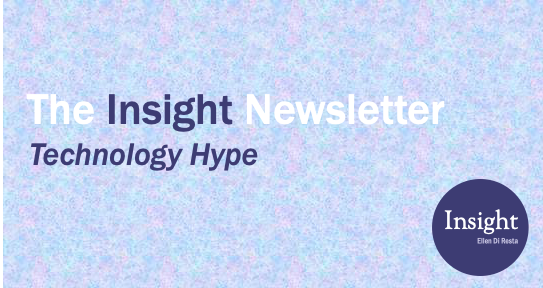Welcome to 2022! As I think about technology innovation this year, I’m reminded of 2000, the year the dot-com bubble burst. There were many factors that contributed to its rise and fall, and Brian McCullough’s Ted Talk gives a great overview of many reasons. I found this point to be especially useful.
“But more than anything else, it was the weak constitution of all those “iffy” dot-coms that had hit the market toward the tail end of 1999 that tipped the scales, companies without a realistic chance to make money over the long term.”
McCullough’s talk describes the technology hype, crazy valuations, and enormous funding rounds that went to startups that had great vision but fell short on business fundamentals. This behavior exemplifies the boom, bust, and aftermath of the hype cycle. The hype cycle was developed by Gartner in 1995, and it is described “a graphical depiction of a common pattern that arises with each new technology or other innovation.”
Companies that did survive the dotcom bust offered real value to real customers, and had real business models that led to sustainable profit. They were the pioneers that populated the “plateau of productivity” in that era.
Most technologies are subject to varying degrees of the hype cycle. In 2022, the technology that stands out as one of the most hyped over the past year is blockchain. In many ways, the parallels are eerily familiar.
For example, McCullough talks about the characteristics of the early “internet businesses.” Ultimately, the internet was a technology that could enable the creation of many types of value. Today, we no longer talk about “internet companies.” We talk about the internet as a part of our basic infrastructure.
Similarly, cryptocurrencies and NFT’s are typically the face of “blockchain businesses,” to the point that many in the mainstream still perceive them as one and the same. But blockchain technology can enable many different applications. Here’s a good list from Deloitte Insight. And a PWC report on how Estonia is using blockchain to enable their government operations is eye-opening.
The key to realizing the benefits of blockchain or any new technology is the ability to look beyond the hype and assess the real value a technology can enable. Too often, in an attempt to avoid the hype, the underlying technology is avoided. Yet, in order for technology to evolve responsibly, in the service of offering new value to customers, we will need to fully embrace its capabilities.
I’m currently working with Gretchen Wilson on an approach to shorten the hype cycle and more quickly define new value propositions for blockchain and other technologies. This approach will be the topic of a future post.
In the meantime, I’d like to know what you are hearing. Which technologies seem to be still at maximum hype, and which have matured beyond hype to offer real value?


